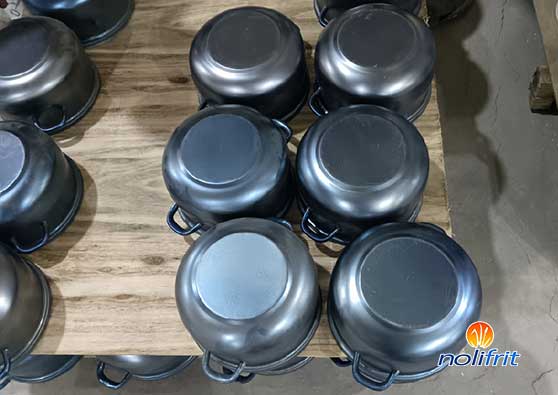What to Do If Degreasing in Enamelware Manufacturing Is Inadequate
The surface pretreatment of enamel metal typically involves degreasing pickling, oil-burning pickling, or oil-burning sandblasting. If degreasing is not thoroughly performed, grease and rust may remain on the metal surface. This can prevent proper adhesion of the ground coat, cause it to peel off after drying, and lead to defects such as firing shrinkage, bubbles, pinholes, and poor adhesion during firing. Enamel manufacturers must pay attention to the degreasing process and master the correct pre-treatment methods.
During technical support services, the Nolifrit technical team discovered that the ground coat adhesion on enamel pots and basins produced by a particular manufacturer was extremely poor. On-site investigation revealed that this manufacturer was using vegetable and fruit detergents for degreasing due to a lack of standardized degreasers, resulting in ineffective degreasing. Additionally, during the oil-burning degreasing process, the absence of a quality inspection standard meant they couldn’t determine when the process was complete, often leading to over-burning, which caused scorch marks and copperheads.

After identifying the issues, Nolifrit engineers conducted multiple tests and proposed the following solutions: hot water cleaning is required, and after rinsing with clean water, the water film must be evenly distributed on the pot’s surface. Even though hot water cleaning was applied, it remained difficult and long time-consuming. Eventually, a home-style dishwashing method was tested—saturating a cloth with detergent, wiping the entire surface of the pot while it was wet, letting it sit for 2–3 minutes, and then rinsing with water. This method proved highly effective.
Rust Prevention Measures:
Since the customer didn’t have access to soda ash, a rust-prevention solution was made using 1.0% baking soda and 0.5% sodium nitrite mixed with water, which worked very well.
For the oil-burning degreasing process, the team tested progressively lower temperatures—from 500°C to 480°C, 450°C, 420°C, 400°C, and 380°C. In small batches, 400°C was sufficient, while for larger continuous production, 420°C was ideal. The optimal oil-burning speed was 2.0 meters per minute. The quality standard for oil-burning was a blue surface color and an evenly distributed water film on the cookware surface after rinsing.
Through improvements in both degreasing methods and the unification of quality inspection standards, this enamelware manufacturer is now able to complete the metal pretreatment process reliably. As a professional supplier of enamel frits and pigments, Nolifrit provides enamel manufacturers with one-stop services and technical solutions. If you encounter similar challenges, feel free to contact us!